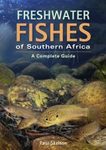Identification Key Monograph
By: John E Randall(Author), Phillip C Heemstra(Author)
32 pages, 8 plates with 20 colour photos; 10 b/w line drawings and b/w distribution maps, 5 tables
![Review of the Indo-Pacific Fishes of the Genus Odontanthias (Serranidea: Anthiinae) with Descriptions of Two New Species and a Related New Genus Review of the Indo-Pacific Fishes of the Genus Odontanthias (Serranidea: Anthiinae) with Descriptions of Two New Species and a Related New Genus]()
Click to have a closer look
About this book
Customer reviews
Related titles
About this book
Thirteen species of serranid fishes of the anthiine genus Odontanthias are known from the Indo-Pacific region: borbonius (Valenciennes, 1828) from the western Indian Ocean to the western Pacific; caudicinctus (Heemstra & Randall, 1986) from the east coast of Africa; chrysostictus (Günther, 1872) from Indonesia; dorsomaculatus Katayama & Yamamoto, 1986 from the Saya de Malha Bank, Indian Ocean; elizabethae Fowler, 1923 from the Hawaiian Islands and Johnston Island; flagris Yoshino & Araga, 1975 from the Ryukyu and Ogasawara Islands; fuscipinnis (Jenkins, 1901) from the Hawaiian Islands and Johnston Island; grahami, new species from New South Wales; katayamai (Randall, Maugé & Plessis, 1979) from the Mariana Islands, southern Japan, and Taiwan; rhodopeplus (Günther, 1872) from Sulawesi, southern Japan, Taiwan, and southwest India (Holanthias perumali Talwar, 1976 is regarded a synonym); tapui (Randall, Maugé & Plessis, 1979) from the Tuamotu Archipelago, Society Islands, Cook Islands, and Tonga; unimaculatus (Tanaka, 1917) from southern Japan to Luzon; and wassi, new species, from American Samoa. Most of these fishes have been classified in the genus Holanthias, now restricted to two species in the eastern Atlantic. Two Indo-Pacific species formerly classified in Holanthias, H. natalensis (Fowler, 1925) from the western Indian Ocean and H. kingyo Kon, Yoshino & Sakurai, 2000 from Okinawa, are placed in the new genus Meganthias, distinct in having many accessory scales on the head, a finely serrate preopercular margin with no enlarged spine at the angle, the upper posterior end of the maxilla rounded, rugose lips, 8 or 9 instead of 7 (rarely 8) anal soft rays, third anal spine clearly longer than second spine, deep body, and large size.
Customer Reviews
Identification Key Monograph
By: John E Randall(Author), Phillip C Heemstra(Author)
32 pages, 8 plates with 20 colour photos; 10 b/w line drawings and b/w distribution maps, 5 tables


































![A Photographic Guide to Gobioid Fishes of Japan [Japanese]](http://mediacdn.nhbs.com/jackets/jackets_resizer_medium/25/253320.jpg?height=150&width=95)




